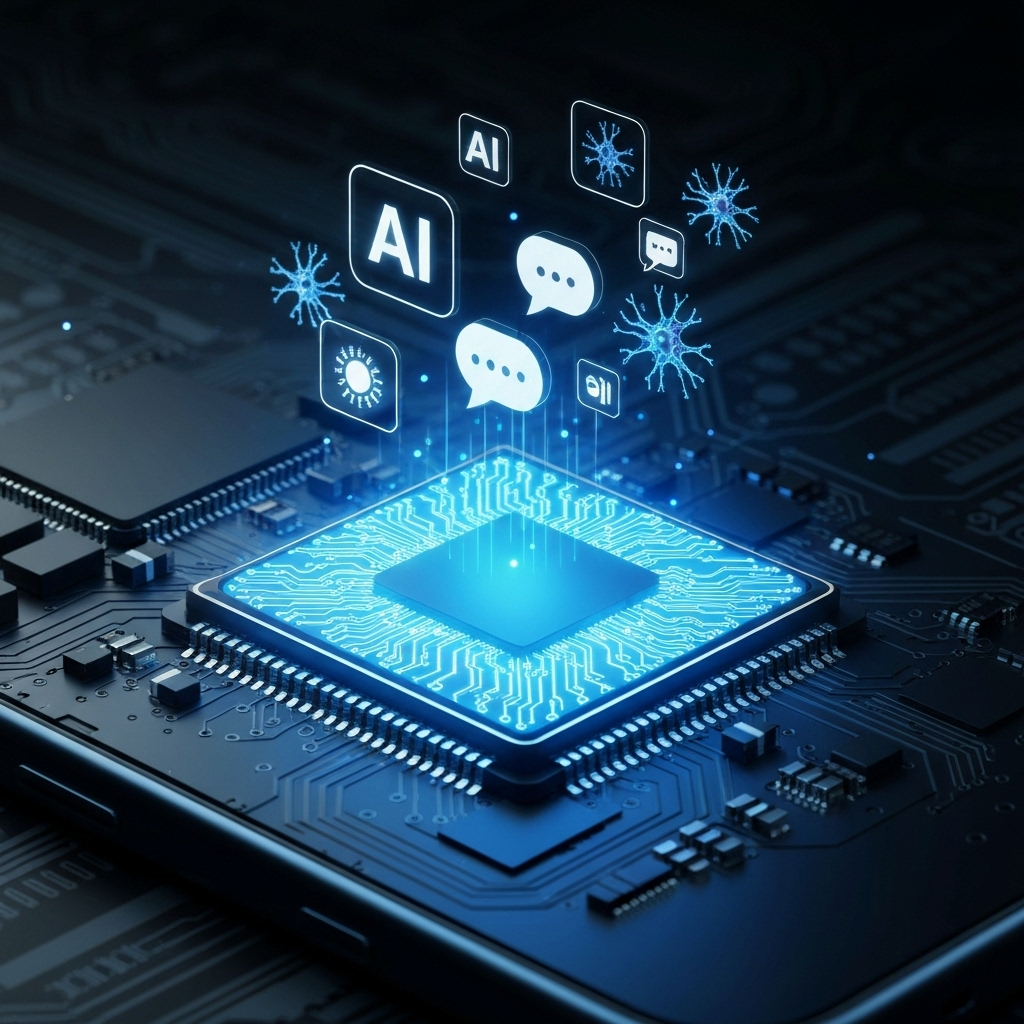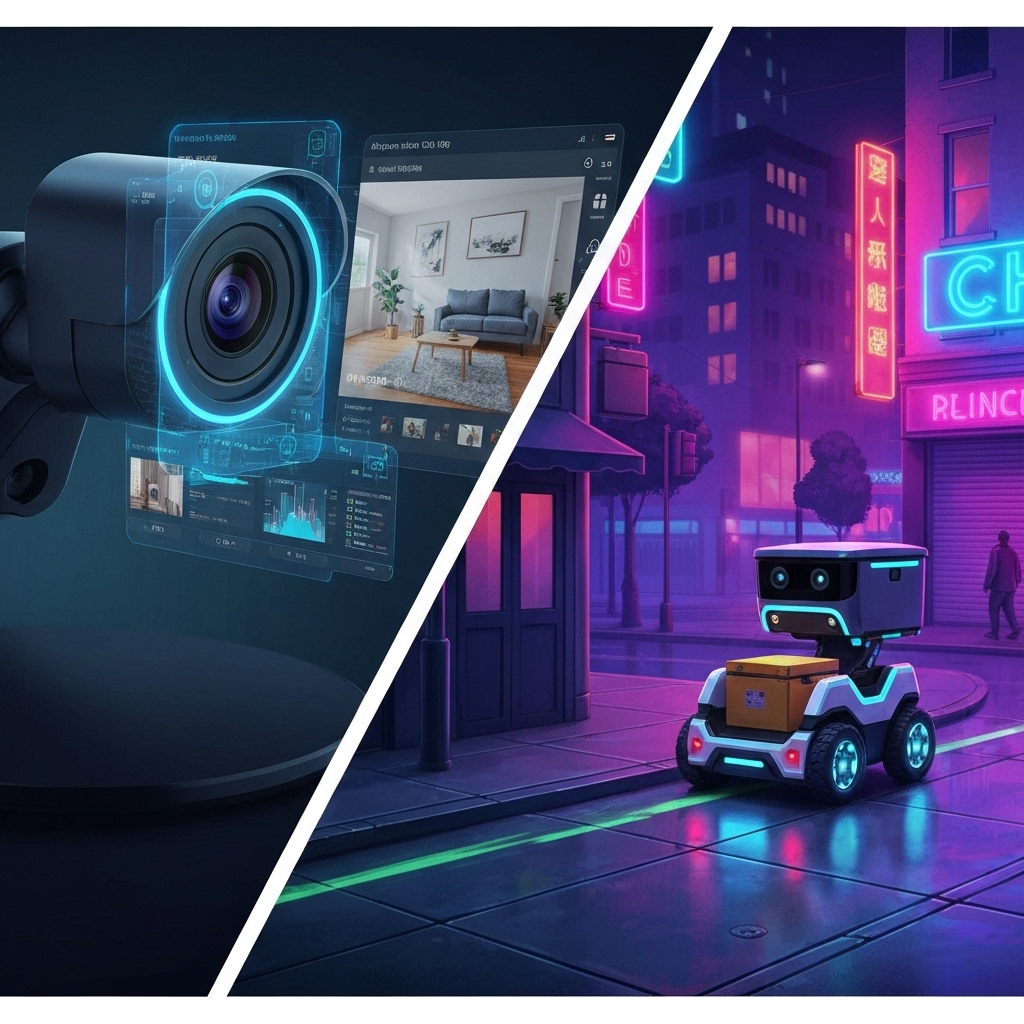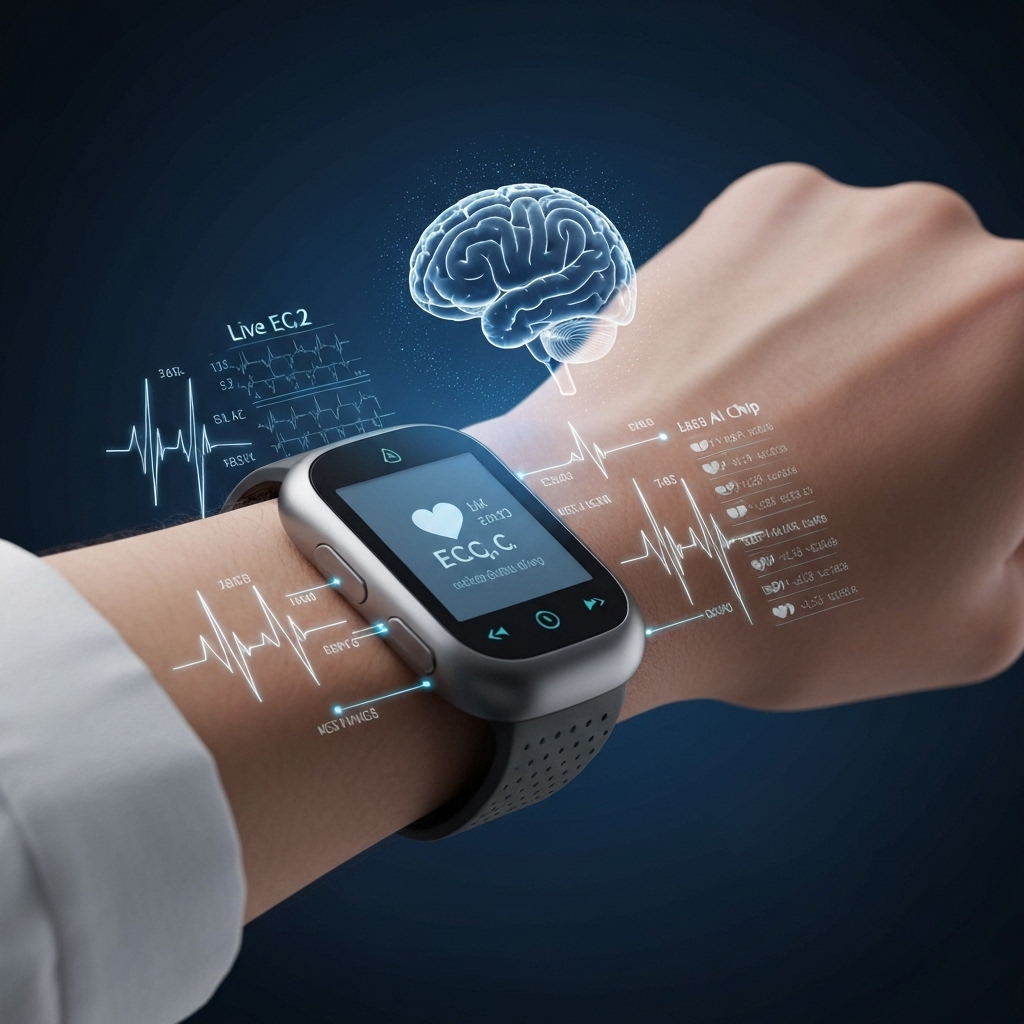Edge AI chips are redefining how devices process data by bringing computation directly to the source, eliminating the need to send information back and forth to distant cloud servers. This shift not only reduces latency but also enhances privacy and security—critical factors in applications like healthcare monitoring and autonomous vehicles. By 2025, leading manufacturers such as NVIDIA and Qualcomm have rolled out next-generation processors specifically designed for on-device machine learning, enabling real-time responses even in bandwidth-constrained environments. These advancements are especially vital for time-sensitive tasks, from facial recognition on smartphones to predictive maintenance in industrial IoT systems.
Energy efficiency is another major advantage of modern edge AI chips, allowing battery-powered devices like wearables and sensors to run complex AI models without draining power. Companies like Google with its Edge TPU and Apple with custom silicon in iPhones are pushing the boundaries of what’s possible locally on consumer hardware. This move toward decentralized intelligence supports sustainability goals by reducing the carbon footprint associated with large-scale data center operations. According to a report by Statista, the global edge AI chip market is projected to grow significantly through 2025, driven by demand across smart homes, robotics, and automotive sectors.
One of the most transformative impacts of edge AI is in autonomous systems, where split-second decisions can be a matter of safety. Self-driving cars, drones, and delivery robots rely on these chips to interpret sensor data instantly without waiting for cloud feedback. The integration of AI directly into hardware also opens doors for more personalized user experiences, such as adaptive voice assistants and context-aware health tracking. As highlighted by research from IEEE, edge computing combined with AI is paving the way for smarter cities and responsive infrastructure.
With faster processing, improved security, and lower energy consumption, edge AI chips are becoming the backbone of intelligent devices. As innovation continues, we’re seeing a democratization of AI capabilities, making them accessible even in remote or offline environments. This trend isn’t just about performance—it’s about creating resilient, private, and efficient systems that work seamlessly in our daily lives. For deeper insights into semiconductor advancements, resources from AnandTech offer detailed analyses of the latest chip architectures powering this revolution.
What Are Edge AI Chips?
Edge AI chips are revolutionizing how devices process data by enabling artificial intelligence to run directly on local hardware, from smartphones to IoT sensors. Instead of relying on distant cloud servers, these specialized processors perform complex computations—like identifying objects in images or interpreting voice commands—right where the data is generated. This shift reduces latency significantly, allowing for real-time responses critical in applications such as autonomous vehicles and smart home systems. By minimizing the need to transmit sensitive information over the internet, edge AI also enhances user privacy and data security.
At the heart of many Edge AI chips are neural processing units (NPUs), which are purpose-built to accelerate machine learning workloads more efficiently than traditional CPUs or GPUs. These NPUs leverage optimized architectures that support low-power, high-speed inference, making them ideal for battery-powered devices. Companies like Qualcomm and NVIDIA have been pioneers in developing chipsets that integrate AI capabilities into edge devices, from drones to industrial robots. As demand for responsive and private AI grows, the role of these processors continues to expand across industries.
Beyond performance benefits, Edge AI chips help reduce bandwidth usage and dependency on continuous internet connectivity. This is particularly valuable in remote or resource-constrained environments where reliable cloud access isn’t guaranteed. For example, agricultural sensors using Edge AI can analyze soil conditions or detect crop diseases in real time without needing constant network access. With advancements in semiconductor technology and increasing support from frameworks like TensorFlow Lite and PyTorch Mobile, deploying AI at the edge has never been more accessible.

Breakthroughs Driving Performance in 2025
The latest edge AI chips are pushing the boundaries of what’s possible in on-device intelligence, thanks to cutting-edge process technologies like 3nm and 2nm fabrication nodes. These advancements allow for more transistors to be packed into a smaller space, dramatically increasing computational power while minimizing energy draw—a critical factor for battery-powered devices. By shrinking the process node, manufacturers can deliver faster processing speeds and improved thermal efficiency, making real-time AI inference feasible even in compact form factors like smartphones and wearables. For more on semiconductor scaling, visit IEEE.
One standout innovation in these chips is adaptive voltage scaling, which dynamically adjusts power delivery based on workload demands. This not only conserves energy during low-intensity tasks but also ensures peak performance when needed. Combined with support for emerging paradigms like spiking neural networks (SNNs), which mimic the human brain’s event-driven processing, these chips enable more efficient and biologically inspired AI models. SNNs excel in scenarios requiring low-latency responses and continuous learning, making them ideal for applications such as voice assistants and autonomous sensors. Learn more about neuromorphic computing at Nature.
Another key driver behind the performance leap is hardware-software co-design, where AI frameworks and chip architectures are developed in tandem. This synergy allows models to run more efficiently by leveraging specialized accelerators such as NPUs (Neural Processing Units) tailored to specific operations like matrix multiplication and tensor processing. As a result, devices can adapt and learn from user behavior over time without relying heavily on cloud resources, enhancing privacy and responsiveness. Companies like Arm and NVIDIA are leading this charge—explore their latest developments at Arm and NVIDIA.
Companies like NVIDIA, Qualcomm, and Apple are leading the charge in developing ultra-efficient AI chips capable of delivering over 100 TOPS while consuming just a few watts of power. These advancements are transforming what’s possible at the edge, enabling complex machine learning models to run locally on devices without relying on cloud connectivity. For example, NVIDIA’s Jetson series brings powerful AI inference capabilities to drones and robots, allowing real-time decision-making in dynamic environments (NVIDIA Jetson).
Meanwhile, mobile chipmakers like Qualcomm are integrating high-performance AI accelerators into system-on-chips (SoCs) used in smartphones and IoT devices. Their Snapdragon platforms now support on-device generative AI, enhancing user privacy and responsiveness. Apple has also made strides with its Neural Engine, featured in A- and M-series chips, which powers features like live text and facial recognition efficiently (Apple Silicon).
Startups such as Groq and Mythic are further pushing boundaries with novel architectures designed specifically for AI workloads. Groq’s Tensor Streaming Processor achieves exceptional throughput with deterministic latency, ideal for real-time inference, while Mythic leverages analog compute-in-memory technology to drastically reduce power consumption (Mythic AI). These innovations signal a shift toward smarter, more autonomous edge devices that can operate reliably under tight power constraints.

Applications Across Industries
Healthcare is undergoing a transformation with the integration of edge AI in medical devices, allowing for real-time monitoring of vital signs like heart rate, blood pressure, and oxygen levels directly on the device. By processing data locally instead of sending it to the cloud, these systems can instantly detect anomalies—such as irregular heart rhythms or sudden drops in vitals—and alert caregivers without delay. This immediacy not only enhances patient safety but also reduces the burden on centralized systems, making remote and at-home care more reliable. Organizations like the U.S. Food and Drug Administration (FDA) are actively working to ensure these AI-driven devices meet rigorous safety and efficacy standards.
In manufacturing, edge AI is proving invaluable through predictive maintenance solutions that analyze sensor data—such as equipment vibrations and temperature fluctuations—directly on the factory floor. By detecting early signs of wear or potential failure, these systems help prevent unexpected downtime and costly repairs, boosting operational efficiency. Because the data is processed locally, manufacturers benefit from faster response times and reduced latency, which is critical in high-speed production environments. According to research by McKinsey & Company, predictive maintenance can reduce machine downtime by up to 50% and increase equipment lifespan significantly.
Retailers are also leveraging edge AI through intelligent camera systems that analyze customer behavior—like foot traffic patterns and dwell times—without storing or transmitting personal images. These on-device analytics preserve privacy by processing video locally and extracting only anonymized insights, aligning with data protection regulations such as GDPR. This enables stores to optimize layouts and staffing while maintaining consumer trust. For more on privacy-preserving AI, resources from IEEE provide guidance on ethical implementation in public spaces.
Modern smartphones are no longer just communication devices—they’ve become powerful AI platforms capable of enhancing photos in real time using on-device machine learning. Apps like those on the latest iPhone and Google Pixel models leverage neural engines to adjust lighting, sharpen details, and even remove unwanted objects, all before you hit save. This shift toward local AI processing means faster results and improved privacy, as sensitive data doesn’t need to be sent to the cloud. According to Apple’s AI overview, these capabilities are built into the hardware itself, ensuring efficiency and responsiveness.
Similarly, AR glasses are beginning to redefine how we interact with foreign languages through real-time speech translation processed entirely on the device. Companies like Google and Microsoft are integrating compact language models into wearables such as Google Glass Enterprise Edition and HoloLens, allowing users to hear translated speech instantly without relying on internet connectivity. This not only reduces latency but also protects user privacy by keeping conversations offline. As detailed on Microsoft’s AI research page, edge-based processing is key to making these experiences seamless and secure.
The move toward on-device AI across consumer electronics reflects a broader industry trend: balancing performance with user trust. By minimizing reliance on external servers, manufacturers can offer faster, more reliable features while complying with stricter data protection standards. For instance, Google’s AI blog highlights how their Tensor chips enable advanced photography and voice transcription without compromising personal information.
As AI models become more efficient, we’re likely to see even more sophisticated applications emerge directly on consumer devices. From smarter voice assistants to real-time health monitoring, the fusion of AI and edge computing is transforming everyday gadgets into intelligent companions. The future of consumer tech isn’t just about connectivity—it’s about smart, private, and instantaneous experiences powered by AI right in your pocket or on your face.

Challenges and Future Outlook
As edge AI systems become more prevalent in consumer and industrial devices, managing heat in compact hardware has emerged as a critical challenge. High-performance inference tasks generate significant thermal output, which can degrade device performance and longevity—especially in smartphones, wearables, and IoT sensors. Engineers are exploring advanced materials, passive cooling techniques, and dynamic workload scheduling to maintain optimal operating temperatures without sacrificing speed or efficiency. For insights into thermal design in modern electronics, resources from IEEE offer detailed analyses on emerging solutions.
Model compression is another key hurdle, as large neural networks often require more memory and computational power than edge devices can provide. Techniques like quantization, pruning, and knowledge distillation are being used to shrink models while preserving accuracy. These methods enable faster inference and lower energy consumption, making AI more accessible on-device. Organizations like arXiv regularly publish cutting-edge research demonstrating how compressed models can perform nearly as well as their larger counterparts.
Security remains a pressing concern, particularly with the rise of adversarial attacks that exploit subtle input perturbations to deceive AI models. Ensuring robustness requires not only defensive training strategies but also real-time detection mechanisms built directly into edge systems. Research into adversarial robustness is ongoing, with institutions like MIT leading efforts to develop resilient architectures for decentralized AI.
Looking ahead, innovations in neuromorphic computing—hardware that mimics the brain’s neural structure—could revolutionize how AI processes information at the edge. Combined with federated learning, which allows models to be trained across distributed devices without sharing raw data, these advances promise smarter, more private, and autonomous systems. As these technologies mature, the future of edge AI will likely emphasize efficiency, resilience, and decentralized intelligence.
Conclusion: The Intelligent Edge is Here
Edge AI chips are rapidly transforming how we interact with technology, moving intelligence from distant data centers directly into our everyday devices. By processing data locally—on smartphones, wearables, and IoT sensors—these chips reduce reliance on cloud servers, enabling faster responses and improved privacy. This shift means sensitive information, like voice commands or health metrics, no longer needs to travel across the internet, minimizing exposure to breaches. As these processors become more powerful and energy-efficient, manufacturers are integrating them into a broader range of consumer electronics, making on-device AI a standard rather than an exception.
The year 2025 marks a turning point where users expect their devices to understand and adapt to their behaviors in real time—without needing constant connectivity. Edge AI enables features like instant language translation, gesture recognition, and predictive text—all running locally. This not only improves performance but also makes AI more accessible in areas with limited internet access. Companies like Qualcomm and Apple have already demonstrated how edge computing can power advanced machine learning tasks directly on devices, setting new benchmarks for what’s possible at the edge.
One of the most significant benefits of decentralized AI is its potential to democratize access to intelligent technologies. With edge AI, even low-power or offline devices can perform complex tasks, opening doors for innovations in healthcare, agriculture, and smart cities. For instance, a farmer could use an AI-powered drone with on-device inference to monitor crop health without relying on network coverage. Similarly, medical devices can analyze patient vitals in real time, alerting caregivers instantly. The scalability and autonomy offered by edge AI make it a cornerstone of next-generation applications.
As edge AI continues to evolve, collaboration between hardware designers, software developers, and privacy advocates will be crucial to ensure responsible deployment. While the technology promises greater control over personal data, it also raises questions about model transparency and device security. Industry standards and frameworks from organizations like the IEEE are helping guide ethical implementation. Ultimately, edge AI isn’t just about smarter chips—it’s about creating a more responsive, private, and inclusive digital future that fits in the palm of your hand.
